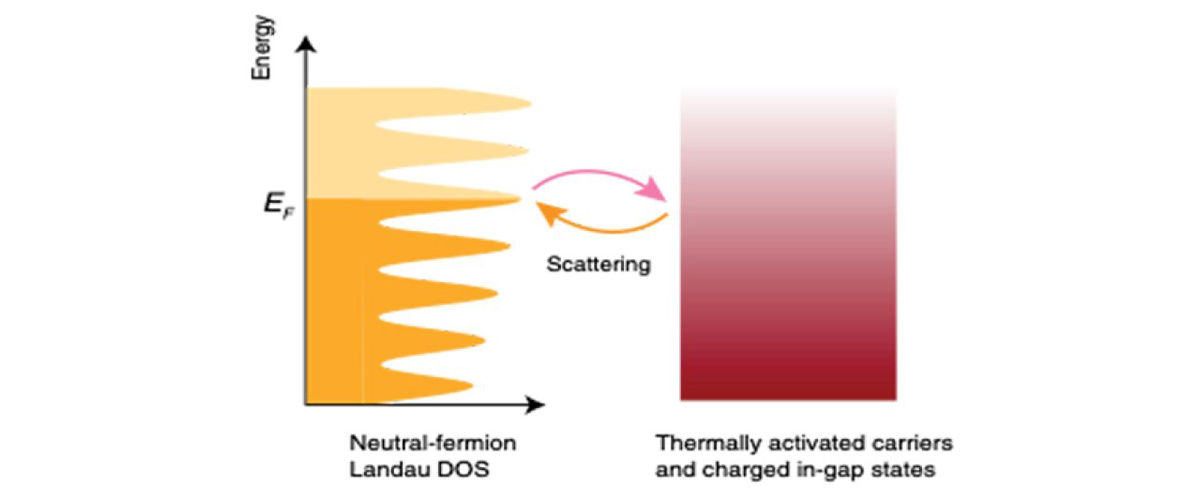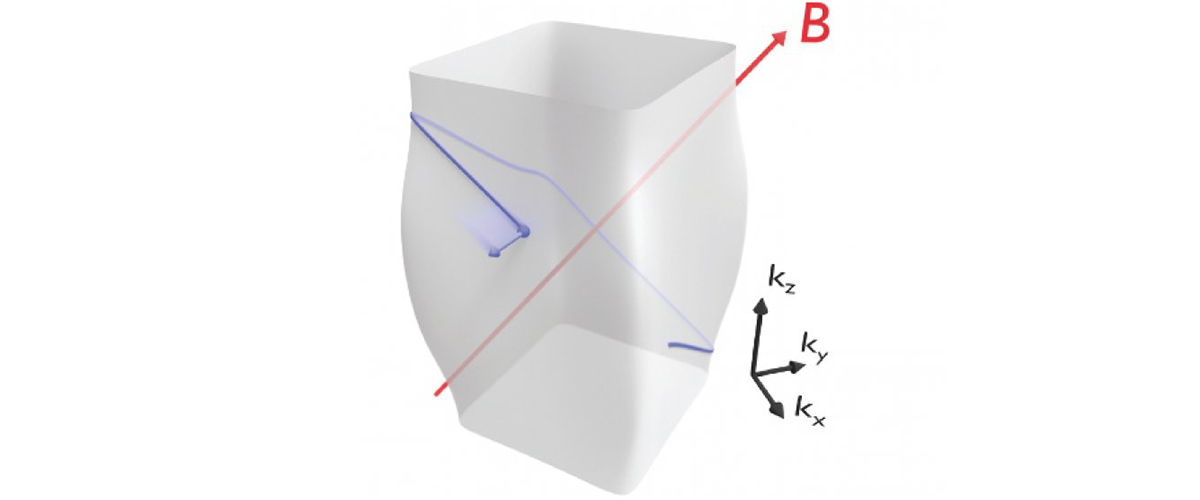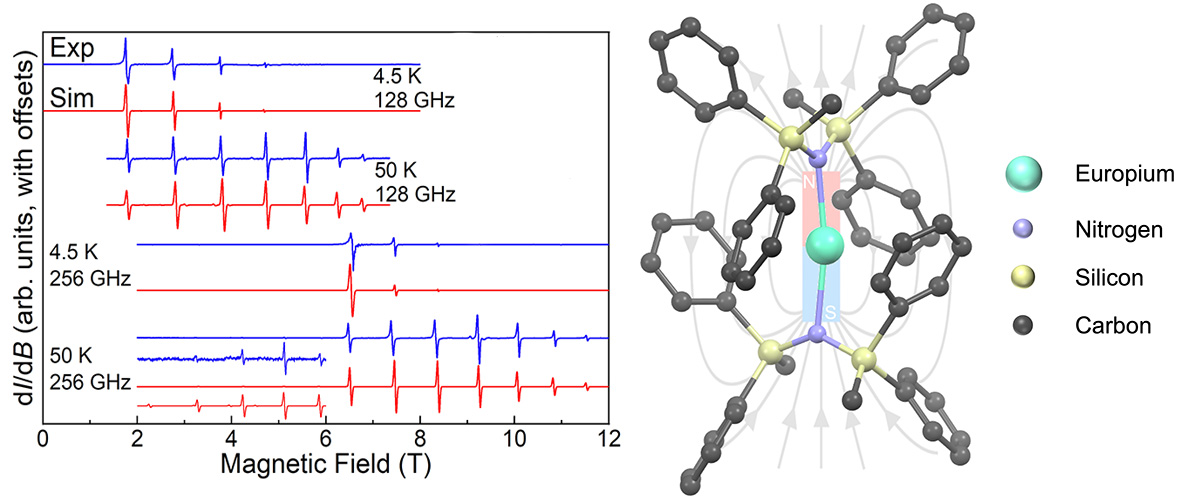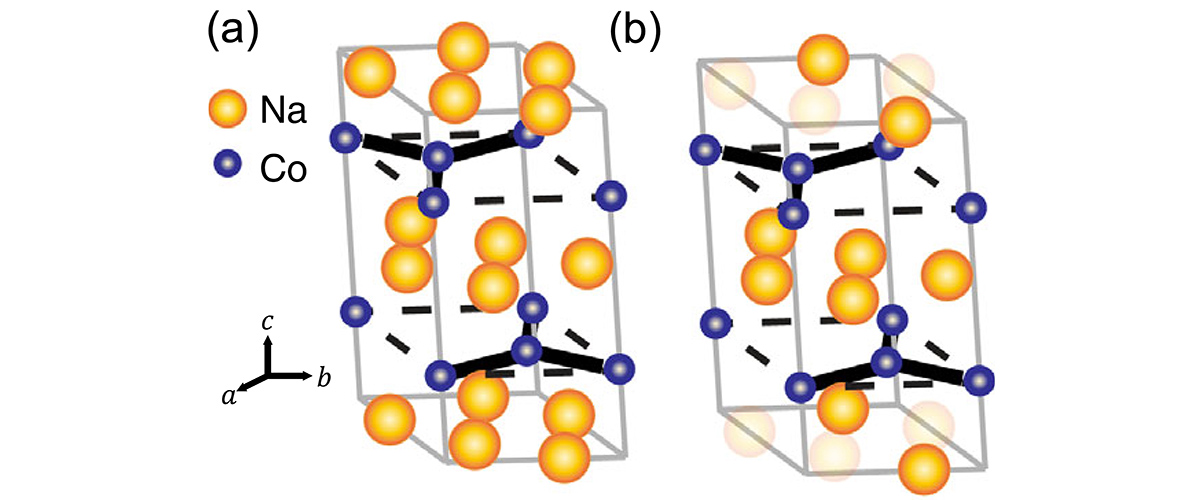What did scientists discover?
Insulators are characterized by poor electrical conductivity and conversely metals are characterized by good electrical conductivity. In both of these cases, the material properties are determined by the quantum mechanical behavior of the electrons. With YbB12 quantum mechanics throws a wrench into scientists' understanding by pushing the electrons to form two teams: one that behaves like electrons in a metal, yet can carry no electrical charge and another team that carries electrical charge, but does not behave like electrons in a metal should.
Why is this important?
YbB12is a Kondo insulator, a material that has very poor electrical conductivity at low temperatures. However, the resistance and magnetization of YbB12 oscillate in magnetic fields, behavior usually seen only in metals with very good electrical conductivity. Careful measurements of the resistance and magnetization, compared with measurements of a quantity called the Hall effect, show that the electrons in YbB12 reorganize into two cohabiting fluids.
One fluid behaves in many ways like the electrons in conventional metals; however, this fluid – bizarrely - cannot conduct electrical charge! The other fluid carries electrical charge but acts in a very exotic manner previously seen in materials such as high-temperature superconductors. The properties of YbB12 are due to collisions ("scattering") among particles from the two fluids, allowing them to interact and influence each others' behavior. Searches are underway for other materials that host this new phase of matter.
Who did the research?
Z. Xiang1,2, K.-W. Chen1, L. Chen1, T. Asaba1,3, Y. Sato3, N. Zhang2, D. Zhang1, Y. Kasahara3, F. Iga4, W. Coniglio5, Y. Matsuda3, J. Singleton6, Lu Li1
1University of Michigan, 2University of Science and Technology of China, 3Kyoto University, 4Ibaraki University, 5MagLab FSU, 6MagLab LANL
Why did they need the MagLab?
The MagLab has unique magnets that provide the 45–73T magnetic fields essential for the research. MagLab staff worked hard to reduce the electrical noise and mechanical vibrations in the specialized equipment, a crucial ingredient for success with sensitive experiments of this kind.
Details for scientists
- View or download the expert-level Science Highlight, Unconventional Charge Transport in Kondo insulator YbB12
- Read the full-length publication Hall Anomaly, Quantum Oscillations and Possible Lifshitz Transitions in Kondo Insulator YbB12: Evidence for Unconventional Charge Transport, in Physical Review X
Funding
This research was funded by the following grants: Lu Li (NSF DMR-1707620, NSF DMR-2004288, DOE DE-SC0020184) G.S. Boebinger (NSF DMR-1644779)
For more information, please contact Tim Murphy.






